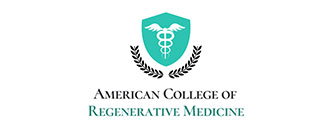
This training is designed as a comprehensive review of terms and overall understanding for the individual interested in learning the basics of Regenerative Medicine.
This 11-part Course offers a thorough overview of Regenerative Medicine. Breakdown the basics, review common terminology, learn how to speak with clients/patients, learn the facts, review commonly asked questions.
TIME STAMP: 0 – 31:45
This section introduces the Basic Science of Regenerative Medicine, and the fundamental components of cell biology that are instrumental in the activities that result in healing and regeneration, which come from several areas including Hematology, Embryology, Endocrinology, and Immunology.
TIME STAMP: 31:45 – 44:41
Cell signaling is an important concept in regenerative medicine, as it is the method by which cells communicate. We will illustrate the transfer of nucleic acids / proteins that have the effect of mobilizing the machinery of the cell. Part 2 also reviews cytokines and growth factors both structurally and functionally.
TIME STAMP: 44:41 – 56:57
In Part 3 of this 11-Part Interactive Regenerative Medicine Training Series, the participant will learn all factions of the constituents of blood and their relationship to regenerative medicine. Highlight on Platelet Rich Plasma (PRP) – a blood-based biologic made from whole blood. where PRP is derived, its wide range of clinical applications, therapeutic benefits, and clinical disciplines. Also includes red blood cells, white blood cells, platelets, cytokines, growth factors and other signaling entities that are essential for regenerative medicine.
TIME STAMP: 56:57 – 01:18:01
Adipose, also known as fat tissue, is a rich source of regenerative medicine cellular therapies. Learn the capacity of fatty tissue in a variety of fields and clinical applications such as burns, wounds, aesthetics and more in Part 4.
TIME STAMP: 01:18:01 – 01:33:49
Bone Marrow Aspiration (BMA) & Bone Marrow Aspiration Concentrate (BMAC) are well-established regenerative medicine therapies. Part 5 will be a review on the differences between BMA & BMAC, where and how it is derived, and the wide range of clinical applications it is used for.
TIME STAMP: 01:33:49 – 01:39:47
Part 6 focuses on A2M. This blood-based protein is manufactured in the liver and can impede the degradation of cartilage. Learn the important place that A2M has in the Regenerative Medicine Space. A2M is currently being used in Orthobiologics as an anti-inflammatory agent.
TIME STAMP: 01:39:47 – 01:50:18
In Part 7, we will discuss what is an Exosome. Where does an exosome come from, and what are the functions of an exosome? In addition, we will discuss what are the various applications for exosomes and how they have become so popular in such a short amount of time.
TIME STAMP: 01:50:18 – 01:59:26
Part 8 will discuss the all-important topic of Extracellular Matrices. We will discuss what ECM consist of, the importance that it plays in regenerative medicine, organ, and tissue repair, as well as cellular therapies.
TIME STAMP: 01:59:26 – 02:28:11
Part 9 reviews various Perinatal Biologics, and where they are derived from. These products fall into a range of categories such as cord blood, Wharton’s jelly, membrane, and amniotic fluid. Learn the differences between each of the categories and their multiple clinical applications.